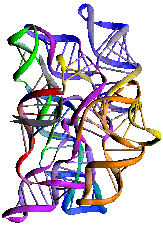Gluten-Free Free
It’s interesting to watch the food fads fall in and out. The gluten-free rage has been one of the most interesting phenomenons of all, since most people really don’t even know what gluten is, but swear they feel better without it. I get calls from clients who are amazed at the difference they notice when they put themselves or their child on a gluten-free diet, then decide to come in for consultation because the results seem to be fading. What I see is that usually the “feel better” comes because they dramatically cut their overall carbohydrate consumption, which also explains why the immediate improvement only lasts a relatively short while.
The gluten-free market has been the fastest-growing sector in the food world for several years, and a fortune is being spent promoting it. Gluten is one of many proteins found in wheat, barley, rye, spelt, kamut, and other wheat relatives. It’s not true for everyone, but is not at all unusual for someone to test poorly for gluten but fine for rye or wheat; spelt and kamut are closer to the original wheat and test even better as a rule. For years I have tested clients with digestive concerns for a full range of grains, and have shocked lots of people who are absolutely certain they are “allergic” to wheat but whose bodies tell them otherwise. God did not put gluten on the planet by itself. In its original state, wheat contains enzymes and other elements that usually help the body process gluten. The problem arises when we separate the gluten, which is what has been routinely added to commercial baked goods and other prepared foods for decades, from the rest of the complex. It’s hard for people to process the isolated protein; undigested proteins turn to acid in the intestinal tract, creating inflammation and breaking down the villi that enable absorption of nutrients into the bloodstream. Without the co-factors present in the whole grain the body can’t completely process the gluten, any more than it can process any of the other isolates we substitute! I am finding clients developing sensitivities to pea protein,which is often used in gene splicing, and other isolates found in protein powders, supplements, bars, and gluten-free substitutes. If I have a client who insists on using a protein powder, I encourage them to buy at least two, not to increase my sales but to ensure that they consume a variety of proteins; favorites are Tera’s Whey, Love and Peas, and Manitoba Harvest Hemp Protein. I also suggest alternating powder in their smoothie with a fresh, raw egg, a handful of nuts or seeds, some sprouts, or coconut or peanut butter.
When people are first told (or diagnose themselves) as gluten-intolerant they usually start by eliminating anything containing wheat from their diets, which includes breads, cookies, pasta, and a whole realm of other starches that form the basis of the typical American diet. They feel better, largely because they are also reducing the sugars in their diets, which also convert to acid. It doesn’t take long, though, before they discover the huge marketplace of gluten-free replacements for the foods they’ve been avoiding. They go back to (usually refined) starches for breakfast, lunch, and dinner, and gluten-free cookies, chips, and other starchy snacks. That loads them up with carbohydrates, including rice starch, potato starch, and rice protein isolates, all restructured foods and simple sugars, and suddenly they find that gluten-free diet isn’t as effective as it seemed at first. Focus on adding more fresh, raw foods, which contain enzymes to help with digestion, use sprouted grains, and increase the variety of whole foods in your diet, and you can likely free yourself from ‘gluten-free’.




















